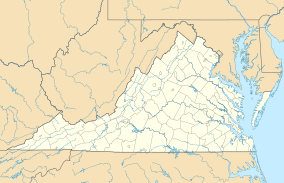Great Dismal Swamp National Wildlife Refuge
| Great Dismal Swamp National Wildlife Refuge | |
|---|---|
|
IUCN category IV (habitat/species management area)
|
|

Photograph of Lake Drummond, Great Dismal Swamp National Wildlife Refuge, Virginia
|
|
| Location |
Camden, Gates, Pasquotank counties, North Carolina, Chesapeake, Suffolk, Virginia, United States |
| Coordinates | 36°35′00″N 76°27′00″W / 36.58333°N 76.45000°WCoordinates: 36°35′00″N 76°27′00″W / 36.58333°N 76.45000°W |
| Area | 112,000 acres (450 km2) |
| Established | 1974 |
| Governing body | U.S. Fish and Wildlife Service |
| Website | Great Dismal Swamp National Wildlife Refuge |
The Great Dismal Swamp National Wildlife Refuge was created in 1974 to help protect and preserve a portion of the Great Dismal Swamp, a marshy region on the Coastal Plain of southeastern Virginia and northeastern North Carolina between Norfolk, Virginia, and Elizabeth City, North Carolina in the United States. It is located in parts of the independent cities of Chesapeake and Suffolk in Virginia, and the counties of Camden, Gates, and Pasquotank in North Carolina.
The Great Dismal Swamp is a southern swamp, the northernmost of many swamps along the Atlantic Ocean's coast, including the Everglades and the Big Cypress in Florida, the Okefenokee, the Congress and Four Holes swamps of South Carolina, and some of the Carolina Bays.
Essential to the swamp ecosystem are its water resources, native vegetative communities, and varied wildlife species. The Great Dismal Swamp's ecological significance and its wealth of history and lore make it a unique wilderness. It is one of the last large wild areas remaining in the Eastern United States.
The Great Dismal Swamp is in southeastern Virginia and northeastern North Carolina between the James River (Norfolk, Virginia) and the Albemarle Sound (Edenton, North Carolina). The original swamp was estimated to be over 1,000,000 acres (400,000 ha); however, human encroachment has destroyed up to 90% of the original swampland.
...
Wikipedia


